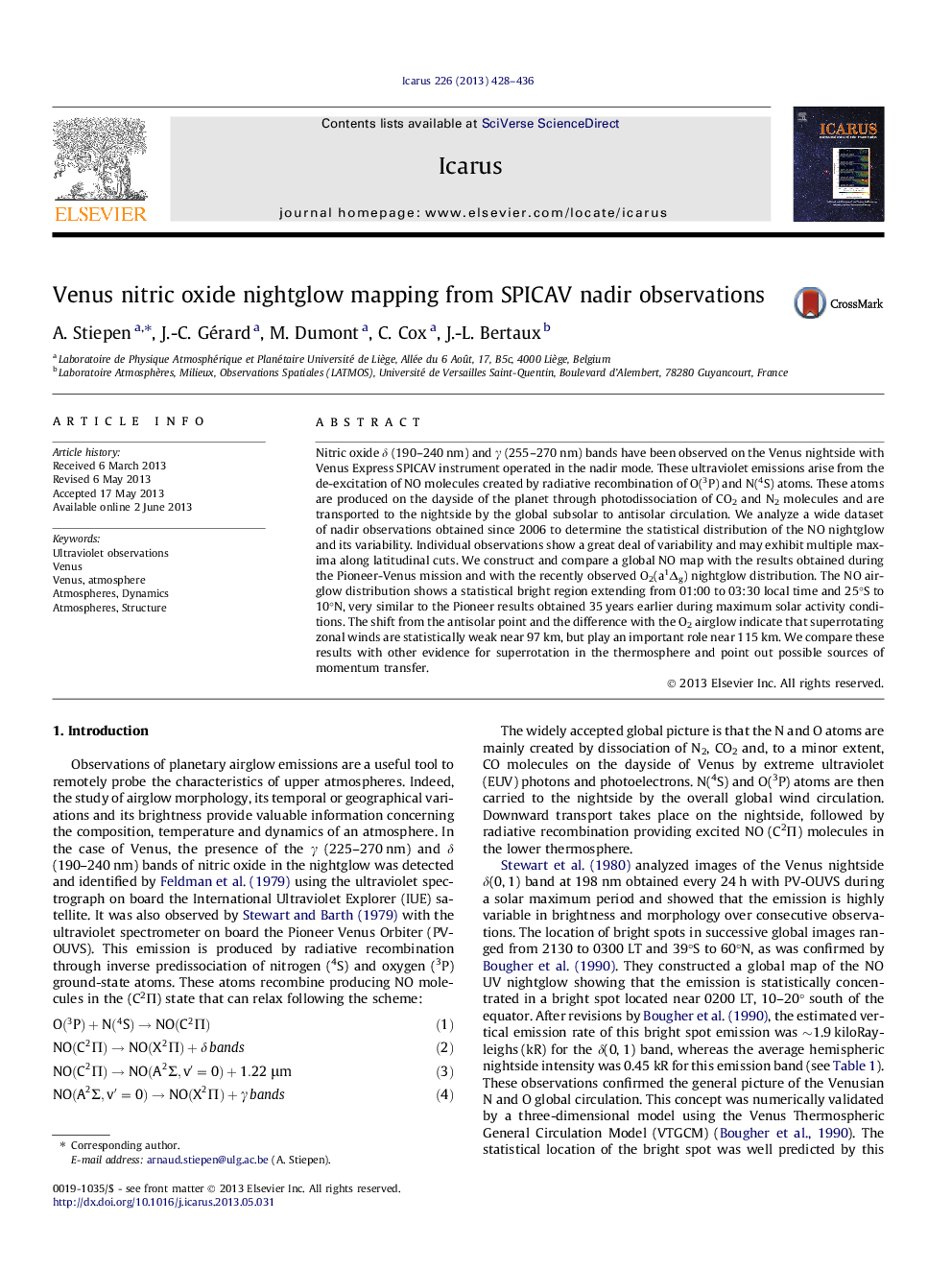| کد مقاله | کد نشریه | سال انتشار | مقاله انگلیسی | نسخه تمام متن |
|---|---|---|---|---|
| 10701314 | 1021128 | 2013 | 9 صفحه PDF | دانلود رایگان |
عنوان انگلیسی مقاله ISI
Venus nitric oxide nightglow mapping from SPICAV nadir observations
دانلود مقاله + سفارش ترجمه
دانلود مقاله ISI انگلیسی
رایگان برای ایرانیان
کلمات کلیدی
موضوعات مرتبط
مهندسی و علوم پایه
علوم زمین و سیارات
علوم فضا و نجوم
پیش نمایش صفحه اول مقاله

چکیده انگلیسی
Nitric oxide δ (190-240 nm) and γ (255-270 nm) bands have been observed on the Venus nightside with Venus Express SPICAV instrument operated in the nadir mode. These ultraviolet emissions arise from the de-excitation of NO molecules created by radiative recombination of O(3P) and N(4S) atoms. These atoms are produced on the dayside of the planet through photodissociation of CO2 and N2 molecules and are transported to the nightside by the global subsolar to antisolar circulation. We analyze a wide dataset of nadir observations obtained since 2006 to determine the statistical distribution of the NO nightglow and its variability. Individual observations show a great deal of variability and may exhibit multiple maxima along latitudinal cuts. We construct and compare a global NO map with the results obtained during the Pioneer-Venus mission and with the recently observed O2(a1Îg) nightglow distribution. The NO airglow distribution shows a statistical bright region extending from 01:00 to 03:30 local time and 25°S to 10°N, very similar to the Pioneer results obtained 35 years earlier during maximum solar activity conditions. The shift from the antisolar point and the difference with the O2 airglow indicate that superrotating zonal winds are statistically weak near 97 km, but play an important role near 115 km. We compare these results with other evidence for superrotation in the thermosphere and point out possible sources of momentum transfer.
ناشر
Database: Elsevier - ScienceDirect (ساینس دایرکت)
Journal: Icarus - Volume 226, Issue 1, SeptemberâOctober 2013, Pages 428-436
Journal: Icarus - Volume 226, Issue 1, SeptemberâOctober 2013, Pages 428-436
نویسندگان
A. Stiepen, J.-C. Gérard, M. Dumont, C. Cox, J.-L. Bertaux,